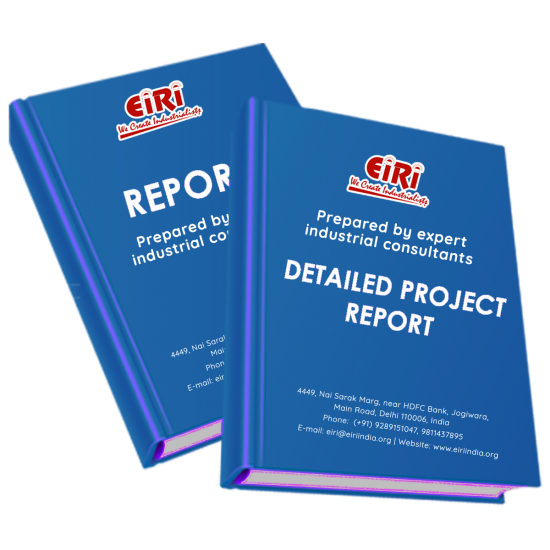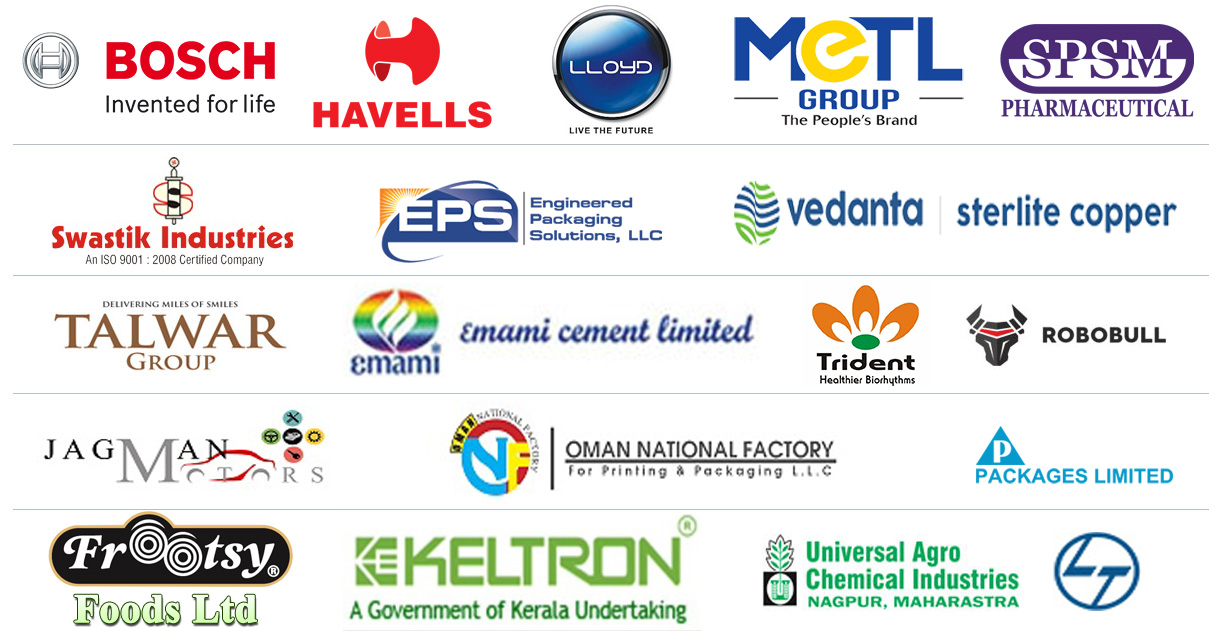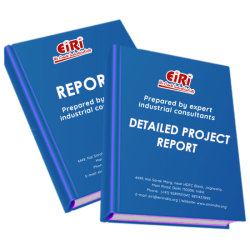Detailed Project Report on raw cashew nut processing

- More than 40 years of experience
- Managed by expert industrial consultants
- ISO 9001-2015 Certified
- Registered under MSME, UAM No: DL01E0012000
- 24/5 Research Support
Get your quesries resolved from an industry expert. Ask your queries before report or book purchase. - Custom Research Service
Speak to the our consultant to design an exclusive study to serve your research needs. - Quality Assurance
All reports are prepared by highly qualified consultants & verified by a panel of experts. - Information Security
Your personal & confidential information is safe & secure.
RAW CASHEW NUT PROCESSING
[CODE NO.4354]
Cashew nut processing allows for the development of an important by-product, which can increase its added value. The liquid inside the shell (CNSL) represents 15 percent of the gross weight and has some attractive possible medicinal and industrial uses. CNSL is one of the few natural resins that is highly heat resistant and is used in braking systems and in paint manufacture. It contains a compound known as anacardium , which is used to treat dermatological disorders. The main markets for CNSL are the United States, the European Union (mainly the United Kingdom), Japan and the Republic of Korea. Together these account for over ninety percent of world trade, most of which is supplied by India and Brazil.
Cashew (Anacardium occidentale L.) a native of Eastern Brazil introduced to India just as other commercial crops like Rubber, Coffee, Tea etc. by the Portuguese nearly five centuries back. The first introduction of cashew in India was made in Goa from where it spread to other parts of the country. In the beginning it was mainly considered as a crop for afforestation and soil binding to check erosions. The nuts, apple and other by products of this crop are of commercial importance. Though its commercial exploitation began from the early 60’s, marginal lands and denuded forests were the areas set apart for the plantation development. Due to the absence of high yielding varieties and multiplication techniques, indiscript seeds and seedlings were used for planting purposes. Because of its adaptive ability in wide range of agro climatic conditions it has become a crop of high economy and attained the status of an export oriented commodity bringing considerable foreign exchange to the country.
Cashew (botanical name Anacardium occidental) was introduced in India by the Portuguese four centuries ago, mainly to prevent soil erosion. Cashew ranks second among the nine tree nuts which figure prominently in international trade circles, first being almond. The cashew adapts to various types of soils and climatic conditions and is hardy and draught resistant tree.
For several centuries the cashew trees was considered merely as a sturdy perennial tree which yielded soft wood and bore the delicious juicy cashew apple. The peculiarity of the cashew apple is that it has nut outside. In the earlier days, the nut was thrown away after the apple was eaten. The nut was rejected since it has a hard shell cover which contains a corrosive liquid (cashewnut shell liquid) which burns the skin on contact. As time passed, interest developed in the nut and various methods of extracting the kernel from the nut proved successful.
Cashew nut has been cultivated in several countries for a long time but the credit for launching into commercial production and export of cashew kernels goes to India.
Cashewnut Shell Liquid
Cashew nut shell liquid (CNSL) is a bye product of the cashew industry in India, which is a major earner of foreign exchange. It is contained in the soft honey comb structure between the outer shell and the kernel of the cashew nut. The cashew nut tree (Ana cardium Occidentale Linm, Hindi, Kaju) belongs to the natural order Anacardiaceae, even as Bhilawan tree and grows at altitudes below 1000 ft along the west and Eastern coasts of India. It is extensively cultivated in Brazil East Africa, Tanzania, Mozambiques Madagascar, Philippines and other tropical regions.
The cashew fruit has a kidney-shaped nut 1 to 1.5 inches long. The nut is attached to the end of fleshy receptable or enlarged or rhomboid-to-oval having 2-4 1/2" length and is bright yellow to red with a waxy skin. Pericarp of the nut consists of a coriaceous epicarp, spongy mesocarp and story endocarp. The mesocarp consists of a honey-comp net work of cells which gives cashew nut shell liquid.
Cashew Testa
Cashew testa is the outer skin of cashew kernel which contains about 25% of tannin material and 11% of non tannins. The tannins consist of D-catechin, gallic acid and leuco-cyanidin, significant tannin procursor, while the non-tannins consist of quinic and caffeic acids. These tanning materials have shown similar properties to that of imported wattlebark tannin used in leather industry. The latter is being imported from East African countries to the extent of 12-15 thousand tons per annum costing nearly 2 crores. The availability of cashew testa is estimated around 2000-2500 tons per year in Quiling region alone where 75% of the factories process cashew nuts. Recently a tannin extraction plant of the Kerala State Development corporation Ltd., has been started at Kottiyam about 8 k.m. from Quilon. The corporation with its 34 cashew processing factories, is the first to start a bye product plant of this nature. It is considered to be the biggest unit in the cashew industry, accounting for more than one fourth of the total processing capacity in the state of Kerala. It is estimated however that 3-4 thousand tons of cashew tesa would be available within the country and from which 500-600 tons of cashew tannin extract costing about 10 lakhs of rupees could be made. The residue of the tannin which is not soluble in water but soluble in mild alkalies. The extracts may find use in oil drilling mud and in the "Boiler compounds" generally used in railway steam boilers.
Cashew Kernel
The cashew Kernel covered with testa is contained in a shell 1/8" thick is contained in a shell 1/8" thick which forms about 67 percent of the whole cashew nut, the remainder being the kernel. Cashew kernel yields about 42.2% of a glyceride oil of the following fatty acid composition.
Oleic Acid 59.6%
Linoleic Acid 19.62%
Palmitoleic Acid 11.14%
Palmitic Acid 0.89%
Stearic Acid 8.75%
The composition of the cashew kernel is very similar to that of sweet almond and constitutes a very nutritive and concentrated food. The kernel contains larger percentage of protein (20 percent) and is rich in calcium, phosphorus, iron and Vitamin A, Vitamins B1 and B2 are also present to a small extent. Recently cashew nut neutral lipids glycolipids and phospholipids were isolated by silic acid chromatography. Each lipid class has characteristic fatty acid distributions with phospholipids being higher in linoleic acids.
COST ESTIMATION
Plant Capacity 100 MT/Day
Land & Building (2,00,000 sq.ft.) Rs. 2.69 Cr
Plant & Machinery Rs. 23.50 Cr
Working Capital for 1 Month Rs. 17.56 Cr
Total Capital Investment Rs. 44.47 Cr
Rate of Return 63%
Break Even Point 32%
- CONTENTS
- INTRODUCTION
- CASHEWNUT SHELL LIQUID
- CASHEW TESTA
- CASHEW KERNEL
- RAW MATERIAL AND ITS AVAILABILITY
- SPECIFICATION OF CASHEWNUT SHELL
- COMPOSITION OF CASHEWNUT
- CASHEW NUT BY-PRODUCTS
- CASHEW APPLE
- CASHEW APPLE JUICE
- CASHEW SYRUP
- CASHEW APPLE JAM
- CASHEW APPLE CANDY
- COMPOSITION OF CNSL
- CULTIVATION OF CASHEW NUTS
- CASHEW NUTS
- PROCESSING OF CASHEW NUT
- USES & APPLICATION OF CASHEW KERNEL
- MEDICINAL APPLICATIONS
- NUTRITIONAL VALUE OF CASHEW
- GRADES OF CASHEW
- 2. SPECIAL CHARACTERISTICS:
- A. CASHEW KERNELS - WHITE WHOLES
- B. CASHEW KERNELS - SCORCHED WHOLES
- C. CASHEW KERNELS - DESERT WHOLES
- D. CASHEW KERNELS - WHITE PIECES
- E. CASHEW KERNELS - SCORCHED PIECES
- F. CASHEW KERNELS - DESSERT PIECES
- STATUS OF CASHEW PROCESSING IN AFRICA
- BENIN
- BURKINA FASO
- COTE D’IVOIRE
- GHANA
- MOZAMBIQUE
- RCN PROCESSED BY OLAM IN MOZAMBIQUE DURING 2017 TO 2019
- ETG IN CASHEW PROCESSING
- NIGERIA
- SENEGAL, GAMBIA AND GUINEA BISSAU
- TANZANIA
- TOGO
- THE CASHEW MARKET IN AFRICA
- COUNTRY REPORTS
- CÔTE D'IVOIRE
- MALI
- GHANA
- GUINEA
- NIGERIA
- GROWTH OF CASHEW NUT KERNEL IN EUROPEAN COUNTRIES
- COUNTRY-WISE IMPORT (FOR 2019, FIGURES MENTIONED ARE FROM JAN TO OCT) – QTY IN TONS
- PRODUCTION OF RCN IN GLOBAL MARKET
- VIETNAM EARNS OVER 1 BLN USD FROM CASHEW NUTS EXPORTS
- CASHEW SET TO SPARKLE ON FESTIVAL DEMAND
- CASHEW NUT SHELL CAKE
- CASHEW PROCESSING PROCESS
- RAW CASHEW NUT PROCESSING INVOLVES THREE (3) KEY STAGES:
- DETAILS OF CNSL (CASHEW NUT SHELL LIQUID)
- METHOD OF CASHEW NUT ROASTING & PROCESSING
- (A) DRUM ROASTING
- B) STEAM ROASTING
- STORAGE
- CLEANING AND SIZING
- CONDITIONING
- ROASTING
- SHELLING
- BENEFITS OF IMPROVED TECHNOLOGY OVER CONVENTIONAL PRACTICES OF PROCESSING
- THE CASHEW KARNEL
- ADVANTAGE OF STEAM ROASTING OVER DRUM ROASTING
- OUTLINES OF MANUFACTURING PROCESS
- CASHEW NUT PROCESSING PLANT
- ROASTING
- SHELLING
- DRYING
- PEELING
- GRADING
- CASHEW PROCESSING MODELS
- STEPS IN PROCESSING RAW CASHEWNUTS
- BASIC STEPS IN CASHEW PROCESSING
- PICTORIAL VIEW OF CASHEW PROCESSING STEPS
- DRYING OF RCN
- PRE-TREATMENT OF RCN
- DE-SHELLING
- PEELING
- GRADING
- GRADING OF CASHEW KERNELS
- CLASSIFICATION BASED ON COLOUR
- CASHEW GRADES AND CHARACTERISTICS
- CLASSIFICATION BASED ON SHAPE
- CLASSIFICATION OF SHAPES OF CASHEW NUTS ACCORDING TO THE AFI CRITERIA
- CLASSIFICATION BASED ON SIZE
- SIZE DESIGNATION OF CASHEW KERNELS
- CASHEW KERNEL SIZES ARE CLASSIFIED IN TWO BROAD CATEGORIES:
- CLASSIFICATION ORDER
- CONVENTIONAL GRADES OF CASHEW KERNELS
- WHITE KERNELS
- SCORCHED KERNELS
- DESSERT KERNELS
- PACKAGING OF PROCESSED CASHEW KERNELS
- MANUFACTURING PROCESS OF RAW CASHEW NUT KERNAL PROCESSING (STEAM BOILER ROASTING)
- RAW MATERIAL HANDLING AND STORAGE
- PREPARATION FOR PROCESSING- STEAM COOKING OR ROASTING OF RCN
- DRYING/HEAT TREATMENT OF SHELLED CASHEW- PRE-PEELING TREATMENT
- PEELING OF CASHEW KERNEL
- CONDITIONING THE PEELED NUTS/KERNEL
- GRADING/SORTING/CLEANING THE CASHEW KERNEL
- PACKAGING THE CASHEW KERNELS IN REQUIRED FORMS
- OTHERS METHOD OF CASHEWNUT PROCESSING
- THE NUT
- PROCESSING:
- ROASTING:
- (A) DRUM ROASTING
- (B) OIL BATH ROASTING
- SHELLING
- DRYING
- PEELING
- GRADING
- PACKING
- PACKING FOR EXPORT
- RESULTS: ROASTING AND CRACKING TRIAL
- PLANT SANITATION
- OBJECTIONABLE CONDITIONS OF FOOD:
- INFESTATION:
- PRESENT OF DIRT:
- PRESENCE OF MOLD:
- RANCIDITY:
- PRESENCE OF EXTRANEOUS MATERIAL:
- PLANT SANITATION:
- THE FOLLOWING SHOULD BE STUDIED CAREFULLY.
- FACTORS PROMOTING INFESTATION:
- PREVENTING INFESTATION
- GENERAL QUALITY STANDARD SPECIFICATION
- RAW CASHEW NUTS
- KERNELS
- GENERAL PROCESSING STEPS FOR CASHEW NUT & POLLUTION CONTROL
- DRYING OF RAW NUTS
- ROASTING / STEAM COOKING
- A. ROASTING:
- B. STEAMING
- DECORDICATION
- DRYING OF THE KERNELS
- PEELING
- GRADING
- FILLING
- PACKING
- ROASTING PROCESS
- COOKING (STEAM ROASTING) PROCESS
- BABY BOILER
- CASHEW NUT COOKER
- KERNEL DRYING (BROMA)
- ENVIRONMENTAL STANDARDS FOR CASHEW PROCESSING INDUSTRIES
- AIR POLLUTION EMISSION STANDARDS
- SULPHUR DIOXIDE, NITROGEN OXIDES AND PHENOLIC COMPOUNDS
- WASTEWATER DISCHARGE STANDARDS
- SOLID WASTE DISPOSAL PRACTICES
- CASHEW NUT PROCESSING FLOW DIAGRAM
- CASHEWNUT PROCESS FLOW CHART FLOW DIAGRAM
- COMPLETE PLANT SUPPLIERS ON TURNKEY BASIS
- RAW MATERIAL SUPPLIERS
- SUPPLIERS OF CASHEW NUTS
- SUPPLIERS OF PLASTIC CONTAINERS
- SUPPLIERS OF PLANT AND MACHINERY
- SUPPLIERS OF BOILER
- SUPPLIERS OF TANKS: STORAGE
- SUPPLIERS OF DRYERS & DRYING OVENS
- SUPPLIERS OF BUCKET ELEVATOR SYSTEMS
- SUPPLIERS OF CENTRIFUGES
- SUPPLIERS OF CONVEYOR BELT
- SUPPLIERS OF MAJOR PROCESSORS AND EXPORTERS OF CASHEW
- ADDRESS OF CONSULTANT
APPENDIX – A:
01. PLANT ECONOMICS
02. LAND & BUILDING
03. PLANT AND MACHINERY
04. OTHER FIXED ASSESTS
05. FIXED CAPITAL
06. RAW MATERIAL
07. SALARY AND WAGES
08. UTILITIES AND OVERHEADS
09. TOTAL WORKING CAPITAL
10. TOTAL CAPITAL INVESTMENT
11. COST OF PRODUCTION
12. TURN OVER/ANNUM
13. BREAK EVEN POINT
14. RESOURCES FOR FINANCE
15. INSTALMENT PAYABLE IN 5 YEARS
16. DEPRECIATION CHART FOR 5 YEARS
17. PROFIT ANALYSIS FOR 5 YEARS
18. PROJECTED BALANCE SHEET FOR (5 YEARS)
How to Make Project Report?
Detailed Project Report (DPR) includes Present Market Position and Expected Future Demand, Technology, Manufacturing Process, Investment Opportunity, Plant Economics and Project Financials. comprehensive analysis from industry covering detailed reporting and evaluates the position of the industry by providing insights to the SWOT analysis of the industry.
Each report include Plant Capacity, requirement of Land & Building, Plant & Machinery, Flow Sheet Diagram, Raw Materials detail with suppliers list, Total Capital Investment along with detailed calculation on Rate of Return, Break-Even Analysis and Profitability Analysis. The report also provides a birds eye view of the global industry with details on projected market size and then progresses to evaluate the industry in detail.
We can prepare detailed project report on any industry as per your requirement.
We can also modify the project capacity and project cost as per your requirement. If you are planning to start a business, contact us today.
Detailed Project Report (DPR) gives you access to decisive data such as:
- Market growth drivers
- Factors limiting market growth
- Current market trends
- Market structure
- Key highlights
Overview of key market forces propelling and restraining market growth:
- Up-to-date analyses of market trends and technological improvements
- Pin-point analyses of market competition dynamics to offer you a competitive edge major competitors
- An array of graphics, BEP analysis of major industry segments
- Detailed analyses of industry trends
- A well-defined technological growth with an impact-analysis
- A clear understanding of the competitive landscape and key product segments
Need Customized Project Report?
- Ask for FREE project related details with our consultant/industry expert.
- Share your specific research requirements for customized project report.
- Request for due diligence and consumer centric studies.
- Still haven't found what you're looking for? Speak to our Custom Research Team
About Engineers India Research Institute:
Note: We can also prepare project report on any subject based on your requirement and country. If you need, we can modify the project capacity and project cost based on your requirement.
Our Clients

Our Approach
- Our research reports comprehensively cover Indian markets (can be modified as per your country), present investigation, standpoint and gauge for a time of five years*.
- The market conjectures are produced on the premise of optional research and are cross-accepted through associations with the business players
- We use dependable wellsprings of data and databases. What's more, data from such sources is handled by us and incorporated into the report
Why buy EIRI reports?
- Our project reports include detailed analysis that help to get industry Present Market Position and Expected Future Demand.
- Offer real analysis driving variables for the business and most recent business sector patterns in the business
- This report comprehends the present status of the business by clarifying a complete SWOT examination and investigation of the interest supply circumstance
- Report gives investigation and top to bottom money related correlation of real players/competitors
- The report gives gauges of key parameters which foresees the business execution























